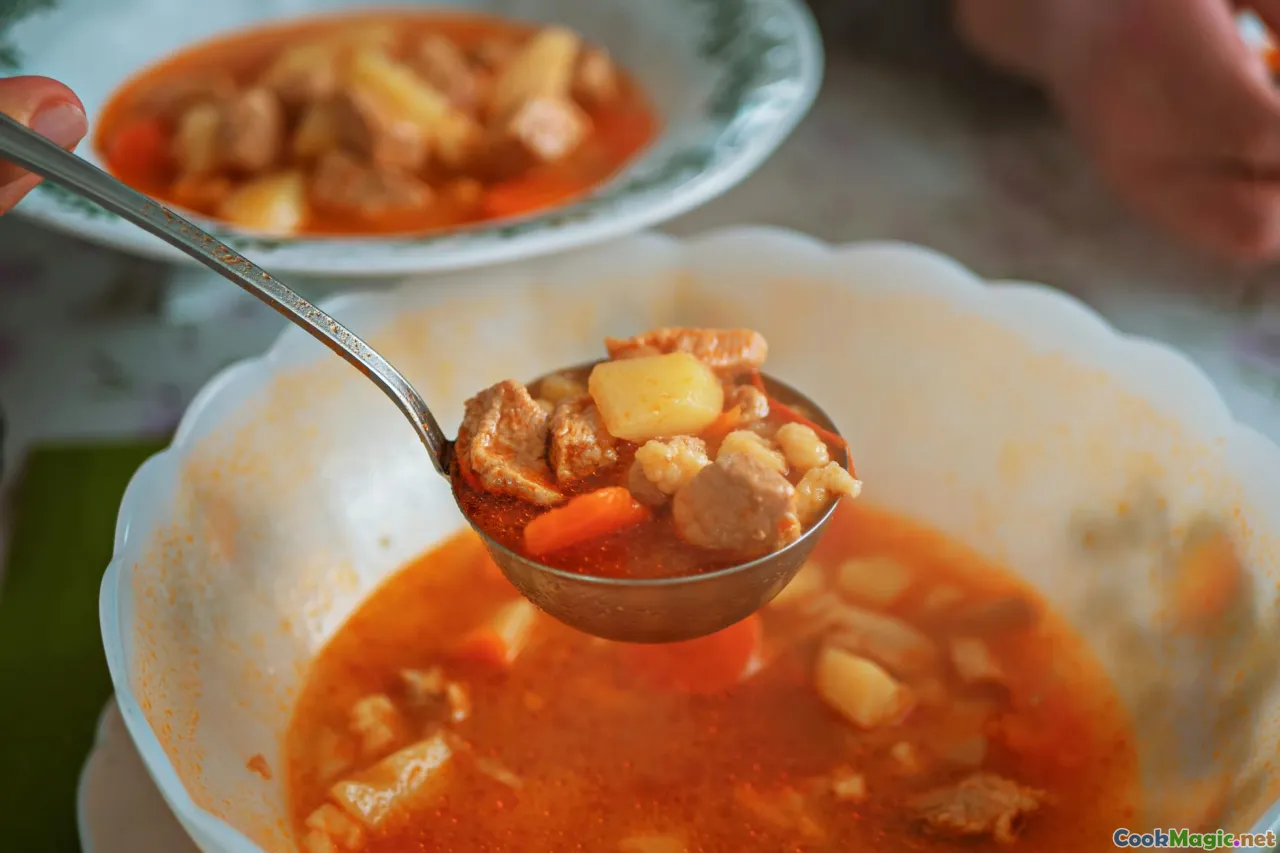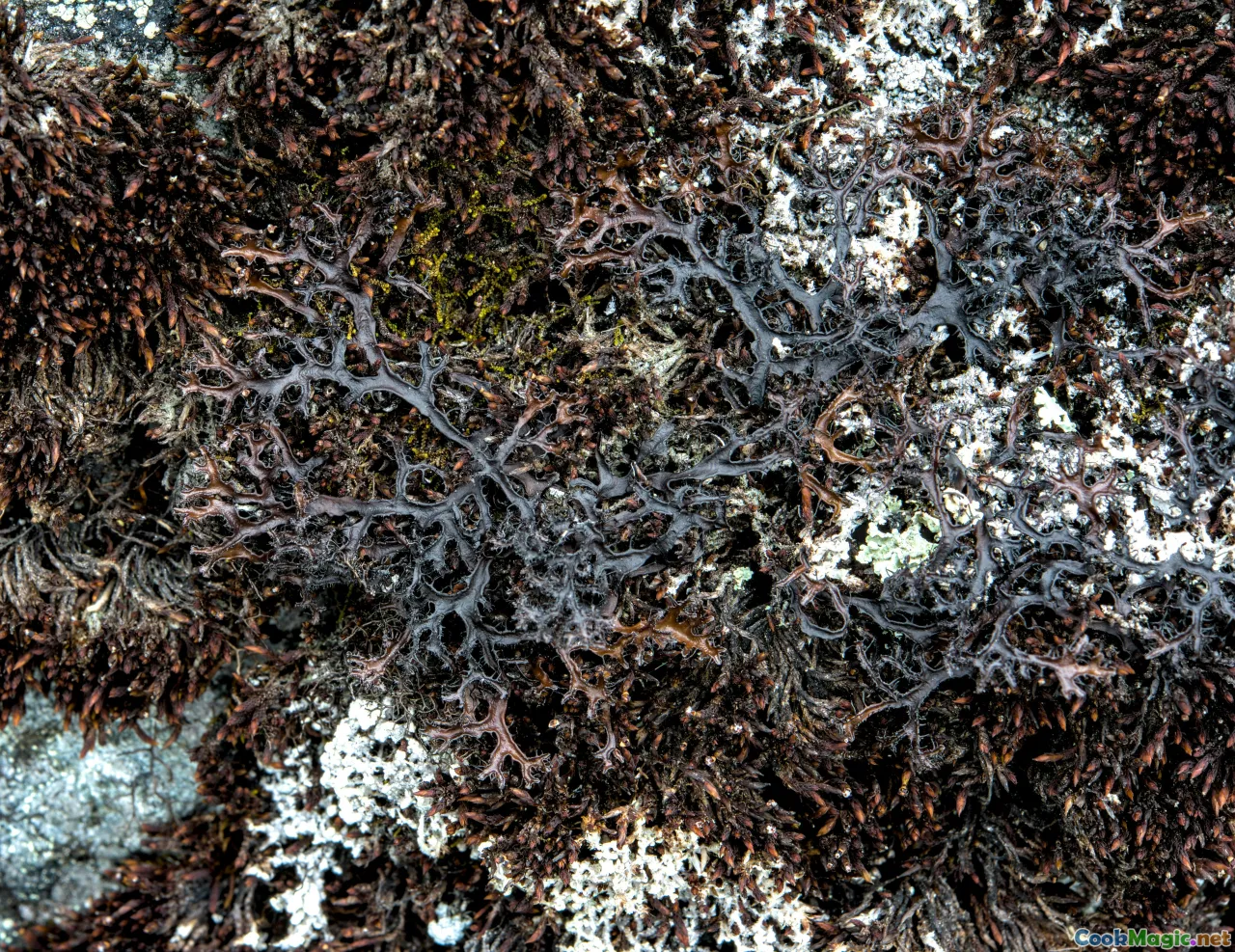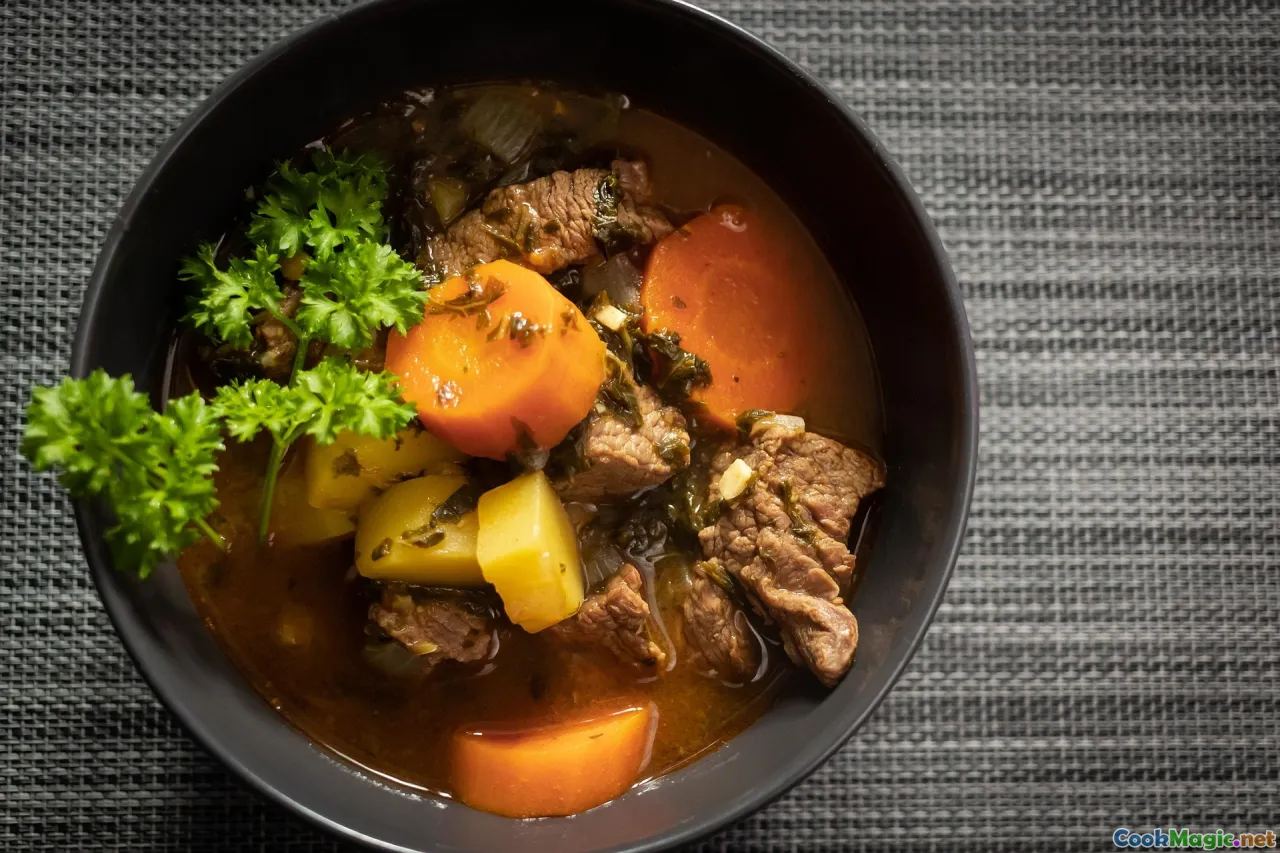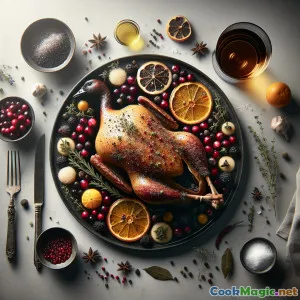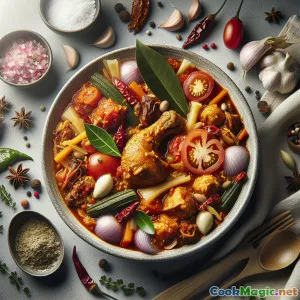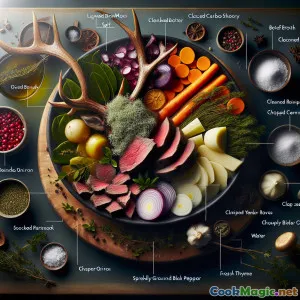
Herzhafter Elchtopf mit Flechteninfusion
(Hearty Lichen-Infused Caribou Stew)
(0 Bewertungen)0
795
Juli 12, 2025
Problem melden
Zutaten
-
900 grams Rentier-Schulter, gewürfelt
(Frisch oder aufgetaut aus dem Gefrierschrank)
-
50 grams Rentiermoos (Flechte), gereinigt und eingeweicht
(Über Nacht in Wasser einweichen oder kurz aufkochen, um die Bitterkeit zu entfernen)
-
1.5 liters Rinderbrühe
(Selbstgemacht oder natriumarm)
-
1 large Gelbe Zwiebel, gehackt
-
3 medium Karotten, geschält und in Scheiben geschnitten
-
1 medium Pastinake, geschält und gehackt
-
3 units Knoblauchzehen, gehackt
(Nach Geschmack anpassen)
-
1 tbsp Wacholderbeeren, zerdrückt
(Verleiht einen harzigen, resinösen Geschmack, der Wildfleisch ergänzt)
-
2 units Lorbeerblätter
-
3 units Frische Thymianzweige
-
1 tsp Salz
(Nach Geschmack anpassen)
-
0.5 tsp Schwarzer Pfeffer, frisch gemahlen
(Nach Geschmack anpassen)
-
500 ml Wasser
(Bei Bedarf den Flechte einweichen)
-
2 tbsp Rapsöl
(Fleisch anbraten)
(Frisch oder aufgetaut aus dem Gefrierschrank)
(Über Nacht in Wasser einweichen oder kurz aufkochen, um die Bitterkeit zu entfernen)
(Selbstgemacht oder natriumarm)
(Nach Geschmack anpassen)
(Verleiht einen harzigen, resinösen Geschmack, der Wildfleisch ergänzt)
(Nach Geschmack anpassen)
(Nach Geschmack anpassen)
(Bei Bedarf den Flechte einweichen)
(Fleisch anbraten)
Nährwerte
- Portionen: 6
- Portionsgröße: 1 Schüssel (350g)
- Calories: 450 kcal
- Carbohydrates: 20 g
- Protein: 50 g
- Fat: 15 g
- Fiber: 6 g
- Sugar: 7 g
- Sodium: 550 mg
- Cholesterol: 90 mg
- Calcium: 80 mg
- Iron: 5 mg
Anweisungen
-
1 - Algen vorbereiten:
Wenn Sie getrockelten Rentiermoos verwenden, weichen Sie ihn mehrere Stunden in Wasser ein oder kochen Sie ihn kurz, um die Bitterkeit zu verringern. Vor der Verwendung gut abtropfen lassen.
-
2 - Den Elch anbraten:
Erhitzen Sie Rapsöl in einem großen schweren Topf bei mittlerer bis hoher Hitze. Tupfen Sie die Caribou-Stücke trocken, würzen Sie sie mit Salz und Pfeffer und braten Sie sie portionsweise an, bis sie auf allen Seiten schön braun sind. Entfernen Sie sie und stellen Sie sie beiseite.
-
3 - Aromaten Anbraten:
Im selben Topf Zwiebeln und Knoblauch hinzufügen, anbraten bis sie weich und durchsichtig sind, braune Reste für Geschmack abkratzen.
-
4 - Die Zutaten für den Eintopf kombinieren:
Das Fleisch zurück in den Topf geben. Karotten, optional Pastinaken, Wacholderbeeren, Lorbeerblätter, Thymian, Brühe und eingeweichten Flechten hinzufügen.
-
5 - Eintopf:
Auf niedriger Stufe sanft zum Kochen bringen, Hitze reduzieren, Topf abdecken und 3 Stunden lang köcheln lassen, bis das Rentier zart ist und die Aromen sich verbinden.
-
6 - Finale Würzung und servieren:
Lorbeerblätter und Thymianzweige entfernen. Salz und Pfeffer nach Geschmack anpassen. Heiß in Schalen servieren.
Wenn Sie getrockelten Rentiermoos verwenden, weichen Sie ihn mehrere Stunden in Wasser ein oder kochen Sie ihn kurz, um die Bitterkeit zu verringern. Vor der Verwendung gut abtropfen lassen.
Erhitzen Sie Rapsöl in einem großen schweren Topf bei mittlerer bis hoher Hitze. Tupfen Sie die Caribou-Stücke trocken, würzen Sie sie mit Salz und Pfeffer und braten Sie sie portionsweise an, bis sie auf allen Seiten schön braun sind. Entfernen Sie sie und stellen Sie sie beiseite.
Im selben Topf Zwiebeln und Knoblauch hinzufügen, anbraten bis sie weich und durchsichtig sind, braune Reste für Geschmack abkratzen.
Das Fleisch zurück in den Topf geben. Karotten, optional Pastinaken, Wacholderbeeren, Lorbeerblätter, Thymian, Brühe und eingeweichten Flechten hinzufügen.
Auf niedriger Stufe sanft zum Kochen bringen, Hitze reduzieren, Topf abdecken und 3 Stunden lang köcheln lassen, bis das Rentier zart ist und die Aromen sich verbinden.
Lorbeerblätter und Thymianzweige entfernen. Salz und Pfeffer nach Geschmack anpassen. Heiß in Schalen servieren.
Mehr über: Herzhafter Elchtopf mit Flechteninfusion
Lichen Steeped Caribou Stew: Summary and Cultural Significance
Lichen Steeped Caribou Stew is an evocative dish rooted in the traditions of northern Indigenous peoples of Canada who have long relied on caribou as a vital source of nutrition and cultural identity. The inclusion of reindeer moss, a type of edible lichen native to boreal forests and tundra, adds a unique earthy dimension and honors the ancient practice of utilizing wild foraged ingredients.
Caribou meat is lean, rich in protein, and deeply flavorful, well-suited for slow cooking methods like stewing which tenderize the meat and develop complex aromas. Using juniper berries, bay leaves, and thyme enhances the gamey notes with woodsy and aromatic accents typical in subarctic culinary traditions.
The stew is an exceptional example of how Indigenous knowledge embraces sustainable harvesting of wild ingredients — every component from game to lichen is sourced with respect and seasonality in mind. While the lichen requires soaking or boiling to remove natural bitterness and aid digestibility, it contributes subtle notes reminiscent of the mossy forest floor, linking the dish intimately to its environment.
This dish is nourishing and hearty, perfect for cold climates and winter months, celebrated especially in communal gatherings or storytelling feasts. It represents resilience and a deep connection to the land, sharing narrative layers alongside flavor.
Tips and Notes
- Soaking or preboiling the reindeer moss thoroughly is critical for removing bitterness and toxins inherent to some lichens.
- If caribou is unavailable, reindeer or venison can offer similar texture and flavor.
- To deepen flavor, marinate the meat overnight in a mixture of juniper, crushed garlic, and herbs.
- Serve with foraged wild berries or rustic bannock bread to complete an authentic northern meal.
Unique Aspects
What sets this stew apart is the blend of game meat accompanied by wild lichen—a pairing rarely seen in modern cooking but one that bridges ancient culinary practice with contemporary interest in indigenous ingredients and terroir. This recipe is both a delicious introduction for adventurous cooks and a homage to enduring northern foodways.
Experience the profound comfort of this traditional dish, where every spoonful tastes like the boreal forest, the tundra, and the fascinating history of Indigenous Canada enfolded into a warm, soul-satisfying stew.

